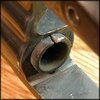Charlie Martinez
Member
I just bought my first S&W revolver, a used, blued SW Model 19 - 4" barrel with custom grips in very nice condition. The blue finish is beautiful & the gun feels great. Accuracy with 38 Sp. HBWC target loads is excellent.
However a range buddy said that the "problem" with Model 19's is that the frame is too light for regular use with 357 Magnum loads & recommended that I limit my shooting to light 357 Mag loads or +P 38 Special rounds.
Revolvers are not common at my range these days but I know lots of people still have Model 19's. Can someone please tell me about their experience with these guns?
However a range buddy said that the "problem" with Model 19's is that the frame is too light for regular use with 357 Magnum loads & recommended that I limit my shooting to light 357 Mag loads or +P 38 Special rounds.
Revolvers are not common at my range these days but I know lots of people still have Model 19's. Can someone please tell me about their experience with these guns?











